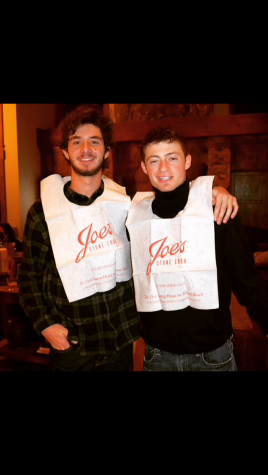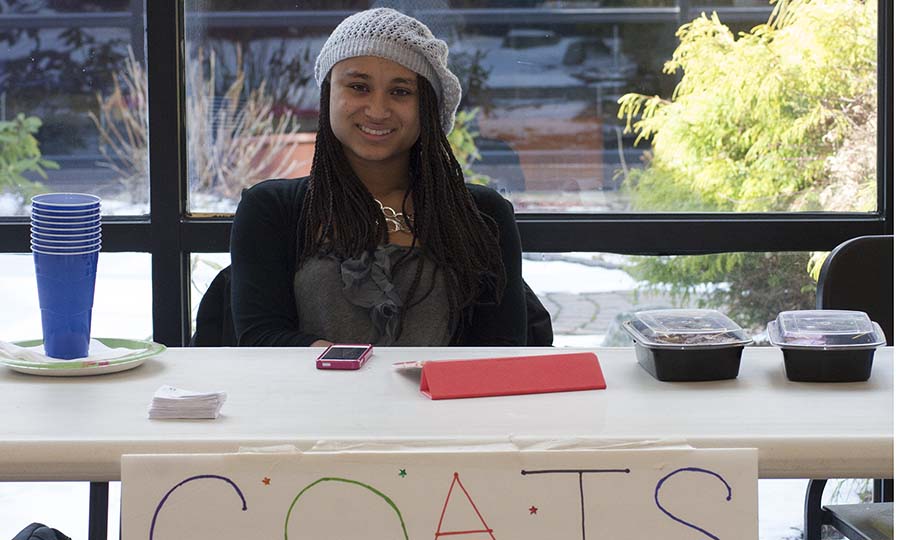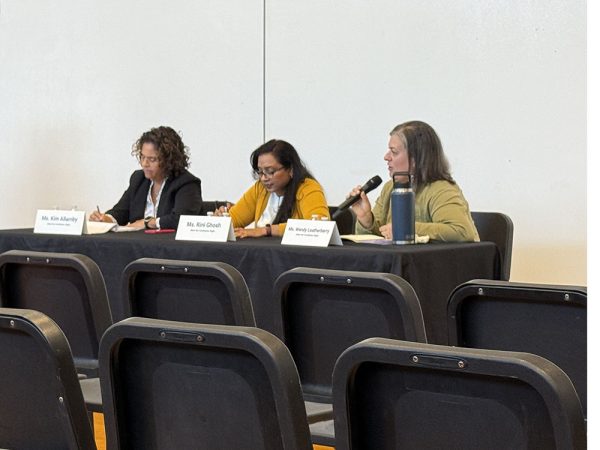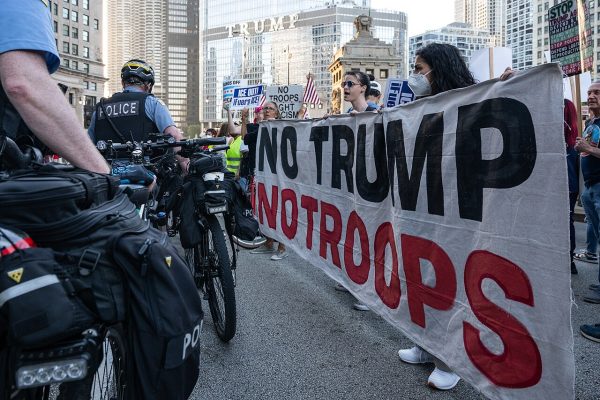Human Rights Students Make a Difference With CTP Projects
Senior Monique Crosby and her group collected coats for the needy. Photo by Jonah Rubenstein
During the week of January 13, students in Greg Deegan’s human rights class presented their “Choosing To Participate” or (CTP) projects, representing what they learned during the first semester.
CTP projects are designed to show students that they can make a difference in the world.
“[Students] research and understand an issue they feel strongly about and take a public stand to practice getting involved,” Deegan said.
His goal is to get kids involved in things that have value to the public and things they really care about.
Deegan has been assigning these projects in his human rights classes for 12 years.
“I really want them to learn about other individuals that make a difference in the world, and to see what is and isn’t successful,” Deegan said.
Throughout the presentation week, groups of students sat at tables outside the lunch room to inform others about their projects. Some students had petitions to spread awareness. Others tried to explain why they chose their topic and what they had done to address it.
Deegan described some of the important projects his students have done in previous years.
“From 2005 to 2008 a genocide was happening in Sudan, and we spread a lot of awareness… raised money and had battles of the band where kids had rallies to end the genocide.”
The rape awareness flyers that were posted around the school were also part of this project. Most of the posters featured the word “no” in many languages or “no means no”. Nathan Wolkoff, a co-creator of the posters, said he wanted to raise awareness about rape.
“The purpose of the flyers was to spread awareness about rape, how often it happens and who usually perpetrates it.” He wrote. “We wanted people to know that this crime happens more then they think and in our own neighborhoods, not some far away place. The purpose was not to make people afraid or paranoid, but to try to help them to make safe decisions.”
Wolkoff also said that it was important to hear people talking about them.
“Throughout the day I heard people talking about it, and regardless of what they were saying, good or bad, the mere fact that they were talking about it means that they were made aware of it, which was our goal.”
Shaina Wolinsky, co-creater of the posters, wrote that it was disconcerting to find so many of them on the floor.
“No one really said anything positive about them.” She wrote. “Unfortunately we found a hand full on the ground from people maybe pulling them down. It is an uncomfortable topic to talk about or be around.”
Many people noticed that the posters came down very quickly, senior Camarie Howell explains why.
“They came down because I think people were being immature about this issue.” She wrote. “They feel the issue was ‘not appropriate’ to talk about at school. But it is (and it is) a problem that really needs to be fix.”
Another project that was very interesting was when kids “made a video to show if diamonds were conflict free,” Deegan said. In this project kids went around Cleveland talking to jewelry stores about where and how they got their diamonds.
“They’re successful, and if nothing else, kids realize it takes organization and preparation,” Deegan said. “The most important part is kids taking a public stand… I think that when people learn how to use their voice for issues that need to be addressed, it’s great practice because I want them to get involved.”

Aden Stern (pictured at left with his cousin Ashton Finegold) is a junior. He is the online sports editor and has been writing for the Beachcomber since...






![“My parents have always said that education is important. My parents are Chinese immigrants, I'm Chinese American, [and that's a] value that has always been ingrained in our community,” said Senior Lyndia Zheng, pictured with Tony Zheng](https://bcomber.org/wp-content/uploads/2025/10/DSC_4244-600x400.jpg)




